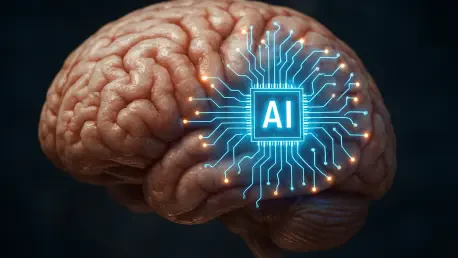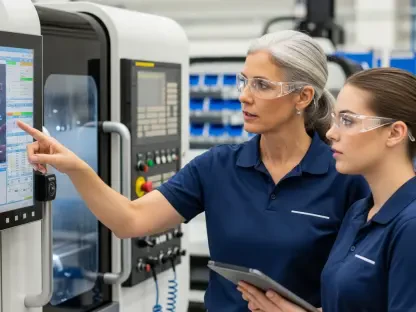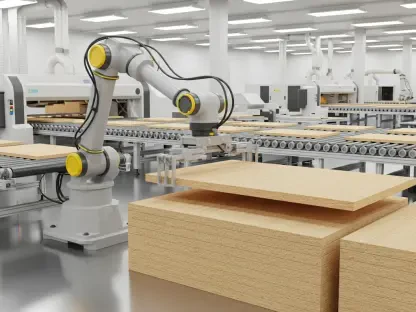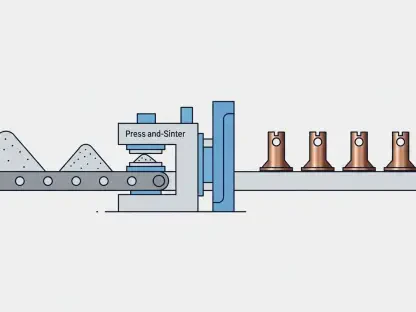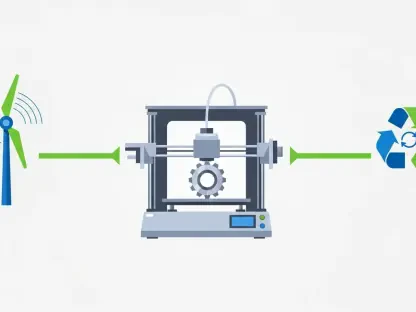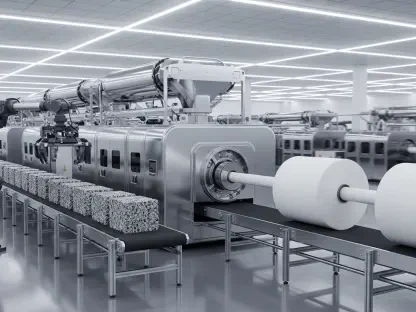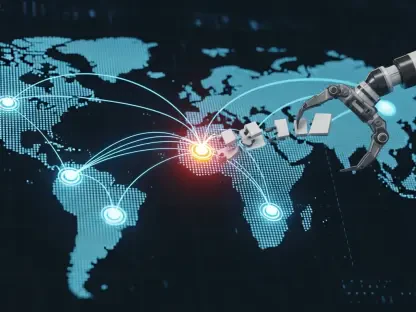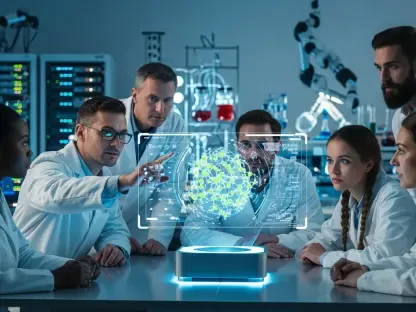The manufacturing industry is undergoing one of its most significant transformations as it increasingly integrates artificial intelligence (AI), automation, and advanced robotics into its processes. This evolution, known as Industry 4.0, marks the era where smart manufacturing processes are not just desired but essential for the survival and growth of companies worldwide. While technology continues to advance rapidly, the balance between technological innovation, a consistent supply chain, and a skilled workforce has shifted. Although technology outpaces traditional methods, challenges arise in maintaining an uninterrupted supply chain and adapting the labor force to new roles that fit an AI-driven production environment. This transformation presents both challenges and opportunities to recalibrate how manufacturing operates, especially in the United States, where embracing AI and integrating it effectively with skilled labor can reinvigorate the industry and drive economic growth.
The Changing Landscape of Manufacturing
As the manufacturing sector transitions into a more technologically driven industry, the framework that previously guaranteed excellence—technology, supply chain, and labor—is being reevaluated. While technological advancements continue at a rapid pace, the supply chain and labor aspects face hurdles, often due to global dependencies and the displacement of traditional jobs. The rise of smart factories, where AI plays a crucial role alongside the Internet of Things (IoT) and digital twins, exemplifies this shift. These modern factories use real-time data to boost efficiency, anticipate failures, improve decision-making through predictive maintenance, and uphold production quality. Such capabilities demonstrate that integrating AI with human oversight is not just a theoretical advancement but an operational necessity, highlighting the critical evolution needed within the workforce to adopt and master these new unforeseen challenges.
Adopting AI and automation requires the development of a skilled workforce that is able to bridge the gap between human intuition and machine efficiency. The shift involves reskilling existing workers and preparing them to collaborate with AI technologies rather than compete against them. This transition is crucial, as workers in traditional roles may find their positions evolving into ones that harness AI’s capabilities. Ultimately, the objective is a symbiotic relationship where AI and humans together enhance productivity while fostering innovative solutions to emerging challenges in manufacturing. This evolution necessitates a strategic approach focused on education, training, and policy reforms that create an inclusive future-ready workforce. Embracing the potential of AI can revitalize not only manufacturing efficiency but also reinstate its cultural and industrial identity in regions like the United States.
Emerging Job Roles in Smart Manufacturing
Industry 4.0 not only demands the integration of advanced technology but also necessitates the creation of roles specifically designed to manage these cutting-edge systems. A prime example of this is the Robot Wrangler, a professional who manages robots within manufacturing settings. While robots gain advanced capabilities, their productivity hinges on human oversight to monitor systems, troubleshoot issues, and optimize performance. With obligations ranging from battery assembly in facilities like Tesla’s Gigafactory to performing intricate repairs, Robot Wranglers need comprehensive knowledge in AI, robotics, and mechanics. These specialists ensure that robotic assets are synchronized effectively, balancing human and machine workforces to maximize efficiency and innovation.
The AI Systems Integrator role is equally crucial in this new manufacturing landscape. Acting as the architects of smart factories, they connect and fine-tune various technological components to operate smoothly and securely. With a clear understanding of the interconnectedness within these systems, AI Systems Integrators optimize IoT sensors, digital twins, and other AI technologies to create cohesive manufacturing ecosystems, enhancing productivity with minimal disruptions. Their work demands mastery over diverse technological domains to ensure seamless interactions among systems, fostering environments where technology bolsters efficiency while adhering to security protocols. Through these roles, new opportunities arise for a workforce that not only understands AI but also thrives on its intricacies, emphasizing the importance of strategic education and skill development.
Strategic and Technical Workforce Evolution
The advancement of technology in manufacturing also necessitates roles that merge strategic planning with technical execution. Operational Planning Specialists, akin to conductors of an orchestra, bridge strategic vision with practical production processes. By harnessing AI tools to model and simulate various scenarios, these specialists refine decision-making and adaptive planning efforts against potential disruptions like supply chain issues. Their work streamlines complex processes, enhancing the ability to preemptively address challenges and ensure consistent outputs across manufacturing operations. This capacity to integrate AI intelligence with tangible business strategy is critical for optimizing efficiency and maintaining continuity throughout production cycles.
Industrial Maintenance Technicians are set to play an instrumental role in smart factories where AI often predicts equipment failures before they transpire. These technicians focus on implementing preventive maintenance strategies, exploring beyond traditional repair techniques to embrace advanced, automated machinery such as robotic arms and automated guided vehicles. Their expertise keeps downtime minimal and operational efficiency maximized, underscoring the shift in focus towards preventative approaches rather than reactive maintenance. The role’s evolution highlights the growing need for technicians proficient in both conventional mechanical skills and advanced AI systems. Cultivating these skills is essential for sustaining smooth operations in environments where sophisticated machinery reigns.
Quality Assurance and Cultural Considerations
Quality control in AI-enhanced manufacturing environments transcends conventional assessment methods, as it becomes embedded within the entire production process, incorporating data-driven strategies and continuous improvement systems. Quality Control Inspectors work collaboratively with engineers and AI systems to uphold stringent standards, employing AI analytics to identify irregularities and prevent quality breaches. This integration of AI and human oversight enables improved inspection processes and ensures that products meet high-quality benchmarks and regulatory compliance. These inspectors’ ability to leverage AI capabilities underscores a transformation where human skills converge with technological advances to enhance product quality continuously.
A crucial aspect of this transition lies in acknowledging manufacturing’s deep cultural roots, especially in regions like the United States, where it intertwines with national identity. The shift towards AI-dominated processes does not eclipse the heritage of manufacturing as a vocation that symbolizes the tenacity and pride of its workers. There are instances of companies investing in workforce transformation programs, like those at Siemens and Toyota, highlighting training initiatives that harmonize advanced technology with human creativity. These initiatives offer a roadmap for building a resilient workforce capable of adapting to new industry demands while preserving the essence of manufacturing heritage. The cultural significance of manufacturing must be woven into the technological fabric to ensure an industry that evolves yet remains anchored to its historical significance.
Future Considerations for AI in Manufacturing
As manufacturing becomes more tech-focused, the traditional pillars of excellence—technology, supply chain, and labor—are undergoing deep reevaluation. With technology advancing swiftly, supply chains and labor face challenges, often tied to global dependencies and the shift from traditional job roles. Smart factories exemplify this shift, integrating AI with IoT and digital twins, leveraging real-time data to enhance efficiency, preempt failures, and uphold quality. Such capabilities underscore that blending AI and human oversight is essential, marking a transformative workforce evolution to tackle these new challenges.
To embrace AI and automation, developing a skilled workforce that bridges human intuition with machine efficiency is vital. This requires reskilling current workers to collaborate with, rather than compete against, AI technologies. This transformation aims for a partnership where AI and humans together enhance productivity and drive innovative manufacturing solutions. It demands a strategic focus on education, training, and policy reforms. Adopting AI has the potential to reinvigorate manufacturing and restore its industrial identity, especially in regions like the U.S.
